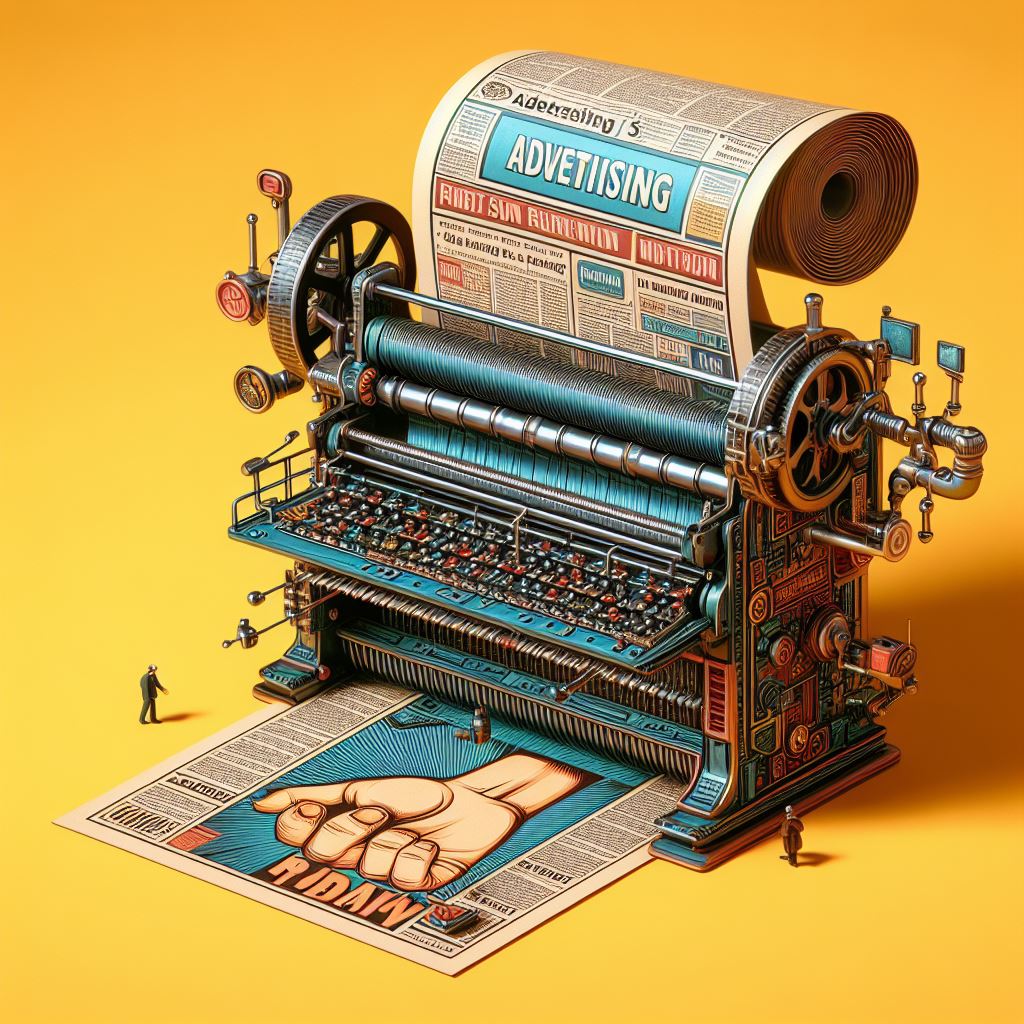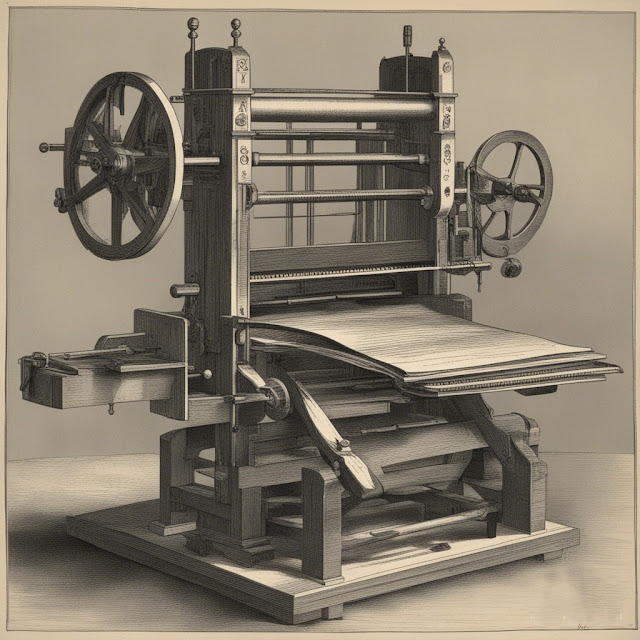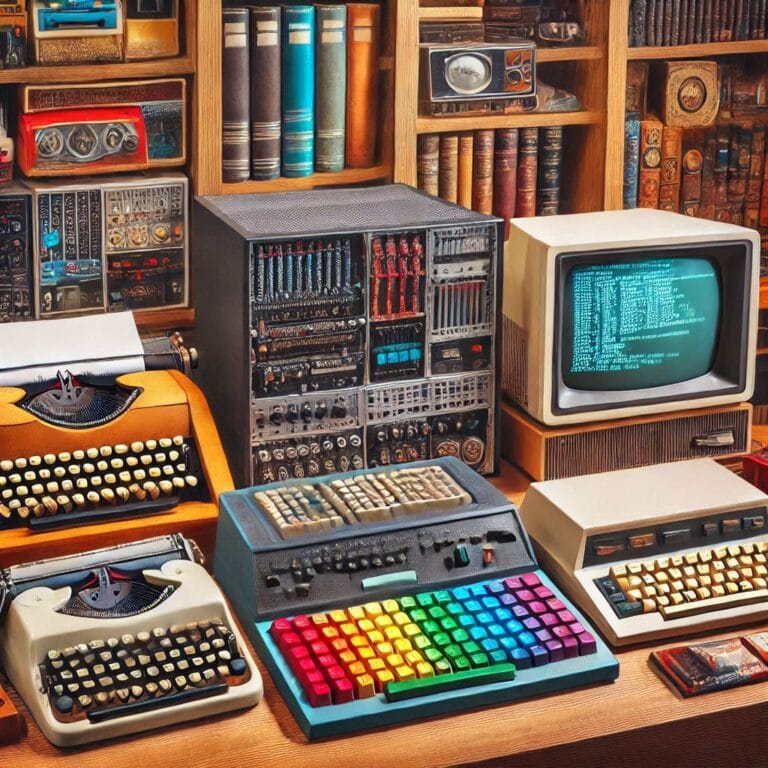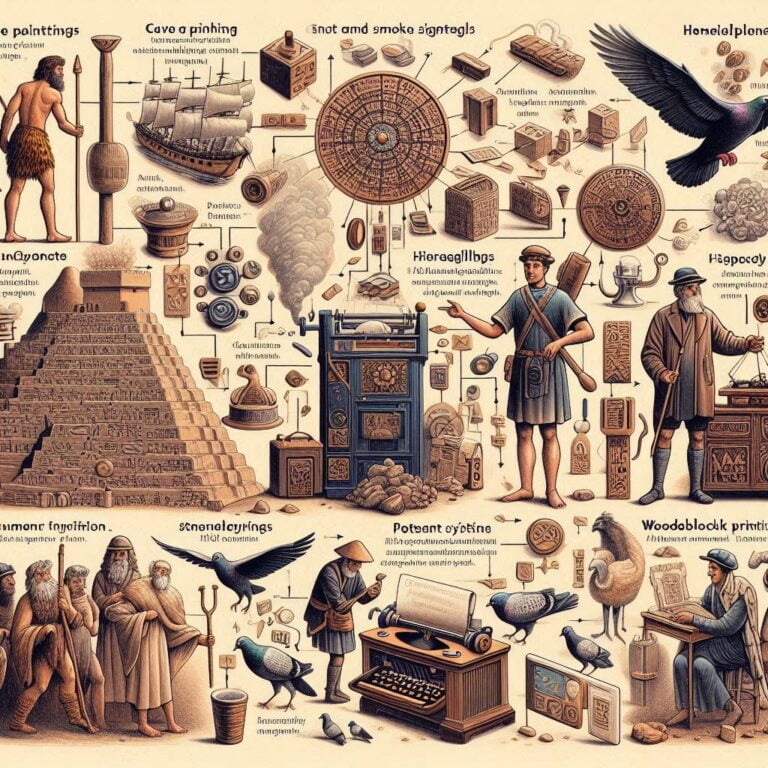
Introduction
Imagine a world where knowledge whispered instead of roared, where stories were hoarded like precious jewels, and ideas were chained to the laborious hand of the scribe. This wasn’t some distant, mythical realm; it was our own, just before the printing press unleashed its revolutionary torrent of ink and paper.
For centuries, information was a guarded treasure, painstakingly copied by monks and scholars in candlelit chambers. Books, those vessels of wisdom, were rare and costly, their leather-bound pages whispering tales only to the privileged few. Education was a luxury, knowledge a trickle reserved for the elite.
Then, in the 15th century, a quiet revolution began. A symphony of clinking metal and rhythmic presses announced the dawn of a new era. The printing press, with its ingenious dance of movable type and thirsty paper, shattered the shackles of exclusivity. Words, once confined to the slow, laborious crawl of the quill, were liberated. They could now be replicated with dizzying speed and precision, a tidal wave of ink threatening to flood the world with knowledge.
But the printing press wasn’t just about replicating the old; it was about birthing a new world. Ideas, once trapped in the hushed halls of academia, spilled onto cobbled streets, accessible to merchants, artisans, and even the common folk. Books, no longer locked away in libraries, became affordable companions, whispering tales and igniting imaginations in homes across the land.
The impact of this ink-stained revolution echoed through the centuries. It fueled the flames of the Renaissance, democratized education, and laid the groundwork for the scientific revolution. It birthed newspapers, nurtured the seeds of democracy, and continues to shape the way we communicate even today.
Impact on Human Civilization
Some events may not give much importance at the time of their occurrence, but over time, we can understand how unique that incidence was in itself and what far-reaching, revolutionary impact it had. The invention of printing had a significant impact on human life, including education, religion, politics, and commerce. following are some of the many areas printing has influenced human history:
Education:
Before the printing press:
- Limited Access: Books were rare and expensive, often chained to library shelves or locked away in private collections. Only the wealthy and clergy could afford personal libraries, leaving the vast majority of the population illiterate and ignorant.
- Oral Traditions: Knowledge was primarily passed down through oral traditions, prone to inaccuracies and distortions. Apprenticeships and guilds provided practical skills, but formal education was limited to the privileged few.
- Church Control: Before the press, historical narratives were often shrouded in myth and controlled by the Church. Printed chronicles and primary sources, like letters and diaries, offered new perspectives and fueled critical analysis of the past. The Reformation further propelled historical inquiry, as each side printed documents to support their claims.

The Renaissance Dawns:
- Classical Revival: The rediscovery of ancient Greek and Roman texts during the Renaissance sparked a renewed interest in learning and inquiry. Scholars like Petrarch and Erasmus challenged the Church’s dominance over knowledge and advocated for a broader, more secular education.
- Humanism: Humanist thinkers emphasized the importance of individual potential and critical thinking, calling for a more accessible and inclusive education system.
- Early Printing: Early printing technologies, like woodblock printing in China and movable type experiments in Korea, paved the way for the Gutenberg revolution.
The Printing Press Unleashed:
- Gutenberg’s Genius: In 1440, Johannes Gutenberg’s invention of the movable type printing press revolutionized the world of knowledge. Books could now be produced faster, cheaper, and in larger quantities, making them accessible to a wider audience.
- Literacy Soars: Printed primers and textbooks flooded the market, making it easier for people to learn to read and write. Literacy rates across Europe skyrocketed, opening doors to education and opportunities for the common folk.
- Democratization of Knowledge: Scientific treatises, philosophical works, and religious texts were no longer confined to the libraries of the elite. The printing press democratized knowledge, allowing individuals to access diverse perspectives and challenge established authorities.
- Literature: The printing press democratized access to literary masterpieces. Plays by Shakespeare and poems by Petrarch reached wider audiences, influencing future generations of writers and fostering a new appreciation for vernacular languages. Yet, female and marginalized voices often remained unheard, highlighting the limitations of the era’s printing practices.
- Science: Scientific advancements soared with the availability of printed scientific treatises and diagrams. Copernicus’s heliocentric model, once confined to handwritten manuscripts, reached a wider audience, sparking debate and paving the way for further scientific breakthroughs. However, anxieties about heresy and censorship sometimes restricted the flow of scientific ideas.
Real-Life Examples:
- The Protestant Reformation: The printing press played a crucial role in the spread of Martin Luther’s 95 Theses, fueling the Protestant Reformation and challenging the Catholic Church’s monopoly on religious knowledge. Pamphlets and printed Bibles in vernacular languages empowered individuals to interpret scripture for themselves.
- The Scientific Revolution: Scientific discoveries and theories, like Copernicus’ heliocentric model, were disseminated through printed books and pamphlets, sparking debate and challenging established beliefs. The printing press facilitated the exchange of ideas and fueled scientific progress.
- The Rise of Literacy Societies: Societies dedicated to promoting literacy and education, like the Brethren of the Common Life in the Netherlands, flourished during this period. They used the printing press to produce affordable educational materials and spread literacy among the masses.
Challenges and Limitations:
- Accuracy and Bias: Early printed materials weren’t immune to errors and biases. Printing houses, often influenced by patrons or religious authorities, could manipulate texts or suppress certain viewpoints. The cost of printing also limited access for the impoverished.
- Literacy Gap: While literacy rates rose, education remained inaccessible to many, particularly women and marginalized groups. Language barriers further restricted knowledge dissemination.
- Standardization vs. Diversity: The printing press facilitated the standardization of languages and spelling, promoting communication clarity. However, it also risked homogenizing diverse oral traditions and suppressing minority languages.
- Women like Christine de Pizan and Isabella d’Este defied societal norms by commissioning printed works and advocating for female education. However, access to printing remained heavily gendered, and their voices were often overshadowed by their male counterparts. Similarly, marginalized groups like peasants and religious minorities often lacked the resources and platforms to have their stories printed and heard.
Religion:
Imagine a world cloaked in whispers of the divine, where sacred knowledge resided within hand-copied scriptures, accessible only to a privileged few. Monasteries and cathedrals echoed with the hushed prayers of monks and scholars, their meticulous penmanship guarding the mysteries of faith. This was the pre-printing press world, a world where religion existed behind a veil of exclusivity.
Then, with a rhythmic clatter that reverberated through history, Johannes Gutenberg’s ingenious invention shattered the barriers. The printing press, with its dance of movable type, unleashed a torrent of ink and paper, forever altering the landscape of religion. Religious texts, once chained to the slow crawl of the quill, were liberated. They could now be replicated with dizzying speed and accuracy, flooding the world with a tidal wave of spiritual knowledge.
- The Protestant Reformation: Martin Luther’s 95 Theses, a fiery critique of the Catholic Church, became the Reformation’s war cry. Printed pamphlets spread his message like wildfire across Europe, sparking theological debates and challenging Church authority. This revolution, fueled by the printing press, reshaped the religious map of Europe, birthing Protestant denominations and igniting centuries of religious reform.
- Before Gutenberg: Briefly describe the laborious process of hand-copying Bibles, emphasizing its rarity and cost. Mention how this limited access to scripture mainly to the wealthy and clergy.
- Gutenberg’s Innovation: Introduce Johannes Gutenberg and his revolutionary invention, the movable type printing press. Highlight his meticulous development of the technology and the monumental task of printing the first Gutenberg Bible in 1455.
- Bhakti Movement in India: This 15th-18th century movement championed personal devotion and vernacular hymns. Printed devotional texts, like Tulsidas’s Ramcharitmanas, spread its message of inclusivity and challenged the caste system’s rigidity. The printing press empowered ordinary people to connect with their faith directly, bypassing the traditional Brahminical elite.
- Islamic World: The printing press facilitated the widespread circulation of the Quran, fostering a shared identity and religious instruction across geographically dispersed Muslim communities. Printed commentaries and theological treatises fueled intellectual discourse and strengthened Islamic scholarship. The Ottoman Empire’s Mihri Hatun defied societal norms by establishing the first woman-owned printing press, publishing religious texts and empowering women through access to knowledge.

Politics:
- Faster Information Flow: Pamphlets and broadsides disseminated news and opinions at unprecedented speed. Political debates raged across printed pages, reaching a wider audience than ever before. This facilitated the development of public opinion and empowered citizens to challenge the status quo.
- Rise of Dissent: The printing press became a potent weapon for challenging established authorities. Radical pamphlets fueled the Protestant Reformation, questioning the Church’s political influence. In England, Thomas Paine’s “Common Sense” ignited the flames of the American Revolution, with its powerful arguments for independence reaching every corner of the colonies.
- Birth of Modern Politics: Printed newspapers and political journals emerged, shaping public discourse and holding leaders accountable. This laid the groundwork for modern democratic systems, where informed citizens participate in shaping their governance.
Real-Life Examples:
- The American Revolution (1775-1783): Pamphlets like Thomas Paine’s “Common Sense” and newspapers like the “Boston Gazette” played a crucial role in mobilizing public support for independence. They exposed British injustices, articulated revolutionary ideals, and coordinated resistance efforts.
- The French Revolution (1789-1799): Printed journals like “Le Journal des débats” and pamphlets by revolutionary leaders like Jean-Paul Marat fueled the fervor of the revolution. They spread Enlightenment ideas, critiqued the monarchy, and mobilized the masses to overthrow the ancien régime.
- Chartist Movement (1837-1848): In Britain, the Chartists, advocating for working-class suffrage, utilized printed newspapers and petitions to reach a wider audience and gain support for their cause. Their publications highlighted social injustices and mobilized workers to demand political reform.

Limitations and Challenges:
- Censorship and Control: Governments and authorities, wary of dissent, attempted to control the printing press through censorship and licensing laws. This limited the free flow of political ideas and stifled oppositional voices.
- Misinformation and Propaganda: The ease of printing also facilitated the spread of misinformation and propaganda. Political factions could manipulate public opinion through biased narratives and fabricated stories, posing a challenge to informed discourse.
Commerce:
The printing press wasn’t just about churning out Bibles and scholarly treatises; it was a revolution in the marketplace, forever altering the landscape of commerce. Before its rhythmic clatter echoed through workshops, businesses operated in hushed whispers, product knowledge confined to word-of-mouth and fleeting scribbles. Imagine merchants hawking wares in bustling squares, relying on memory and hand-painted signs to entice customers. This was the pre-printing press world, a world of commerce shrouded in ambiguity and limited reach.
Printing changed the way business was done. To promote goods and services and make it easier to business increase their reach to customers people start using printed advertisements, catalogs, and other materials. This helped to scale businesses and fuel the growth of capitalism and the modern economy.
Real-Life Revolutions:
- The Fugger News Network (16th century): The enterprising Fugger family in Germany, recognizing the press’s potential, established a network of news pamphlets, disseminating market trends and business opportunities across Europe. This “Fugger News” revolutionized trade, influencing investments and shaping economic landscapes.
- The Rise of Branding: Printed logos and trademarks, standardized through consistent reproduction, fostered brand recognition and loyalty. Consider Josiah Wedgwood’s exquisite pottery, adorned with the iconic “Made in England” stamp, becoming a household name thanks to the power of printed advertisements.
- Double-Entry Bookkeeping: Luca Pacioli’s treatise on double-entry bookkeeping, previously confined to handwritten manuscripts, reached a wider audience thanks to the press. This standardized accounting system, adopted by merchants across Europe, streamlined business practices and facilitated the growth of complex trade networks.
Impacts and Legacies:
- Capitalism’s Fuel: The printing press fueled the engine of capitalism. Efficient communication, standardized pricing, and wider market reach empowered businesses to flourish. This, in turn, fostered innovation, competition, and ultimately, economic growth.
- Global Trade Explosion: Printed maps and nautical charts, disseminated through the press, empowered explorers and navigators. This, coupled with detailed trade reports and market analyses, propelled the Age of Exploration and laid the groundwork for global trade networks.
- The Information Age Prototype: The printing press foreshadowed the information age. The rapid dissemination of knowledge and ideas fostered a more informed and interconnected society, laying the foundation for modern communication systems and information sharing.
News and Media:
Long before the endless scroll of social media feeds and the cacophony of 24-hour news cycles, information traveled at a snail’s pace. News whispered through taverns, rumors scurried by hand-written letters, and knowledge resided within the hushed confines of monasteries and universities. This was the pre-printing press world, a world shrouded in an information famine.
The development of the printing press was the first mass media technology and changed our way of consuming news and information. Illustrated London News was the world’s first weekly newspaper started in 1842. Newspapers, magazines (National Geographic, Time, Life, Vogue), and books are still printed, and the rise of digital printing has made it easier and cheaper to produce printed materials.

From Parchment to Headlines:
- The Birth of Mass Media: The printing press was the first true mass media technology. Pamphlets and broadsides disseminated news of wars and political upheavals, while printed almanacs and chronicles kept the populace informed about daily life and distant events. This marked a seismic shift from the oral traditions and limited circulation of handwritten manuscripts.
- A World Transformed: Newspapers, the fledgling giants of this new information age, emerged across Europe. The “English Mercurie” (1588) reported the Spanish Armada’s defeat, while the “Courant” (1734) in America became a platform for revolutionary voices. Printed news fueled public discourse, challenged authority, and shaped political landscapes.
- Beyond News: The printing press wasn’t just about headlines. Like Galileo’s “Dialogue Concerning the Two Chief World Systems,” scientific treatises reached wider audiences, sparking scientific revolutions. Novels like Cervantes’ “Don Quixote” and Shakespeare’s plays ignited literary imaginations and transcended geographical boundaries. Knowledge, once hoarded by the elite, became accessible to the masses.
Real-Life Examples and Impacts:
- The American Revolution: Printed pamphlets like Thomas Paine’s “Common Sense” rallied colonists against British rule, disseminating revolutionary ideas and igniting the flames of independence. The printing press became a potent weapon in the fight for liberty, demonstrating its power to shape political discourse and mobilize the masses.
- The Industrial Revolution: Scientific advancements, fueled by the widespread circulation of technical manuals and engineering treatises, spurred technological innovations. Newspapers and trade journals facilitated communication and collaboration among inventors and entrepreneurs, propelling the Industrial Revolution forward.
- The Rise of Literacy: Access to affordable books and pamphlets spurred a rise in literacy rates across Europe and America. Education, no longer confined to the privileged few, became a pathway to social mobility and individual empowerment. The printing press laid the groundwork for a more informed and literate citizenry.
Advertising:
Print’s Enduring Power: Don’t let the digital buzz fool you, printed materials are far from obsolete. In fact, 1837’s invention of Chromolithography by Godefroy Englemann ushered in a vibrant era of eye-catching printed ads. Brochures, catalogs, and even flexible “flex” ads continue to be marketing powerhouses, even in the digital age.
Real Impact, Real Examples: Remember the iconic Michelin Man pamphlets tucked into car windows? They’re a testament to print’s staying power. Similarly, Domino’s pizza menus delivered straight to doorsteps helped fuel their expansion. Printed materials offer a tangible experience, often trusted more than fleeting digital ads.
Why Print Works: Studies show print ads hold attention longer, leading to better brand recall. They can target specific demographics through targeted mailings, reaching audiences who might miss digital campaigns. Plus, the tactile experience of flipping through a brochure or holding a catalog creates a lasting impression.
The Future of Print: Print isn’t going anywhere. It’s evolving alongside digital, offering a complementary experience. Think about high-quality brochures mailed alongside targeted online ads, or QR codes on printed materials linking to interactive digital experiences. It’s all about creating a multi-sensory brand journey that leverages the strengths of both print and digital.
Timeline of Printing –
Precursors and Foundations (3000 BCE – 1440 CE):
- 3000 BCE, Mesopotamia: Cuneiform script emerges, etched onto clay tablets with styluses. Cylinder seals and pottery imprints offer additional methods of information dissemination, showcasing early attempts at recording and transmitting knowledge. (Evidence: Excavated clay tablets like the Nippur Tablet and administrative records, cylinder seals depicting deities and scenes, pottery imprints with geometric patterns)
- 2nd Millennium BCE, China: Cai Lun invents paper in 105 BCE, a crucial innovation that lays the foundation for future printing technologies. This lightweight and durable material paves the way for mass-produced written materials and wider knowledge dissemination. (Evidence: Historical records like the “Later Han History”, archaeological finds of early paper fragments)
- 1040-1045 CE, China: Bi Sheng develops the world’s first movable type system using fired clay characters arranged on an iron plate. While labor-intensive and limited in character variety, this marks a significant leap towards mass-produced printed materials. (Evidence: Shen Kuo’s “Dream Pool Essays” detailing Bi Sheng’s invention, potential fragments of clay type)
- 1234 CE, Korea: Korean artisans create a sophisticated bronze movable type printing press, utilizing individual metal characters arranged on a type bed. This innovation significantly increases efficiency and accuracy compared to Bi Sheng’s clay type, boosting the spread of knowledge throughout Korea. (Evidence: The “Jikji” book, the oldest extant metal movable type printed book, historical records like the “Koryo Annals”)
Gutenberg and the European Revolution (1440-1550):
- 1440 CE, Germany: Johannes Gutenberg invents the movable type printing press using metal alloys, revolutionizing printing with its speed, precision, and mass production capabilities. This innovation marks a pivotal moment in human history, democratizing access to knowledge and information. (Evidence: The Gutenberg Bible, 1455, as a testament to the technology’s potential, historical documents and accounts detailing Gutenberg’s work)
- 1450s-1500s, Europe: The printing press rapidly spreads across Europe, fueling the Renaissance and Reformation. Incunabula, or early printed books, proliferate, disseminating knowledge, literature, scientific advancements, and religious texts to a wider audience than ever before. (Evidence: Extensive collections of incunabula in libraries worldwide, historical records reflecting the cultural and intellectual flourishing of the period)
- 1470s-1500s, Global Expansion: Printing presses reach Italy, France, England, Spain, and beyond, impacting cultures worldwide. Newspapers and pamphlets emerge as powerful tools for communication, education, and political movements, fostering a more informed and engaged citizenry. (Evidence: Early printed materials from various countries, historical accounts of the printing press’s impact on different cultures and societies)
Diversification and Refinement (1550-19th Century):
- 17th-18th Centuries: Increased use of woodcuts and engravings for illustrations in printed materials adds visual depth and storytelling elements. Advancements in papermaking techniques like the Fourdrinier machine in 1799 led to mass production and wider accessibility of paper, further democratizing access to printed materials. (Evidence: Examples of woodcut and engraved illustrations in books and pamphlets, historical records of papermaking advancements)
- 18th Century, North America: The first printing press in the American colonies was established in Cambridge, Massachusetts, in 1638. Benjamin Franklin emerges as a prominent printer and publisher, utilizing the press to disseminate ideas and contribute to the American Revolution. (Evidence: Existing colonial-era printed materials, historical accounts of Franklin’s printing activities)
- 19th Century, Industrial Revolution: Technological advancements brought faster presses like the steam-powered cylinder press, further increasing printing speed and efficiency. Innovations like lithography in 1800 enabled high-quality color printing, revolutionizing the visual landscape of printed materials. Mass production of newspapers and books flourishes, shaping public discourse and education. (Evidence: Examples of Industrial Revolution-era printed materials, historical accounts of technological advancements
20th-21st Centuries: Digital Transformations and Beyond:
- Early 20th Century: Offset printing becomes the dominant technology, offering high-quality and cost-effective printing for mass production. Photoengraving techniques further enhance image reproduction, leading to more visually appealing printed materials. (Evidence: Examples of offset-printed materials, historical accounts of the printing industry’s evolution)
- Late 20th Century: Digital printing emerges, offering on-demand printing and personalization options, challenging traditional printing models. The internet revolution
Conclusion:
The timeline of printing innovation shows how printing technology has evolved over time, from clay tablet writing to the invention of movable type in China to modern 3D printing technology. Each new invention and advancement in printing technology continued to develop human history and the way we communicate and share knowledge.
As long as printed materials are used for news and media, advertising, and art and design, the impact of printing on human history and society will endure. Printing technology is still an integral part of our world and will continue to influence how we communicate and share knowledge even after digital technology has completely changed how we do so.
Discover more about it here,








